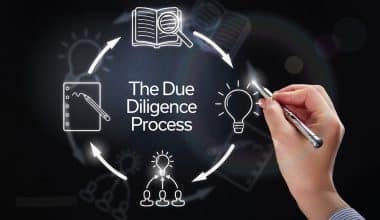An email management system is a strategy for increasing email efficiency and reducing the detrimental effects that email handling can have on a person’s productivity and job happiness. We’ll look at a number of things in this article, and they include strategies for effective email system management, sorting software, and outlook. Our aim is just to ensure your emails are quite up and running and no bulks of messages with no one to pay attention to them.
Read Also: EMAIL PROTECTION: Why Is It Important
Email Management System
Emails sent and received by employees are centrally recorded by the email management system. Emails can be managed by applying retention schedules, access controls, and a classification system to this content. It is possible to capture the email-related metadata to maintain and access this data. One of the most popular uses of the email management system is email archiving. These solutions, at their most fundamental level, either copy or remove messages from the messaging program and store them somewhere else. Some of these solutions substitute the attachments with a stub or a link within the message instead of archiving the message itself. An email management system is a component of a whole solution.
Large numbers of incoming customer emails can be sorted, organized, and responded to with the use of email management systems. An email management system, however, is not just for assistance; it can be used for any circumstance involving a large number of incoming emails, such as campaign feedback or the internal service desk of global corporations.
Best Email Management System
We are all aware that as your business expands, emails might overflow your inbox and result in a wave of issues. Your staff sends out many responses to one email, important emails are overlooked, and conversations are meaningless. And no actual work gets done in the midst of this pandemonium. You can easily manage your internal and customer emails by making the correct tool investment. You can use more channels than merely email to communicate with clients, companies, and important stakeholders, and to enhance internal cooperation.
Therefore, if you find it difficult to keep up with your emails, this blog is for you. You will look at what an email management system is and talk about some essential aspects. The best email management system will be our primary focus as we examine them.
8 Best Email Management Systems
The best email management system will be our primary focus as we examine these different options.
#1. Help Scout
Most effective email management system for medium- and small-sized businesses. An email management system is designed especially to assist teams in effectively managing their email correspondence. You may use advanced collaboration capabilities like private notes to keep everyone updated and collision detection to get rid of redundant work with Help Scout.
Finally, having access to consumer profiles keeps you informed. To make interactions easier and reduce hassle for both the sender and your staff, you can view previous chats and other basic information. The best part is that the email management system is only one of the many tools you have access to when you register for Help Scout.
Price: Starting at $20 per user/month.
#2. Sanebox
Sanebox is an email management software that’s best for managing emails that are best for personal usage.
There are methods to help manage personal inboxes even though a lot of email management software concentrates on commercial requirements. SaneBox is among the best we’ve come across. When emails arrive in your inbox, they are automatically sorted by their sophisticated AI, which has learned your unique email habits.
Price: Starting at $7/month.
#3. Sendinblue
Most effective email management system for one-to-many communication. There are occasions when you need to address a large group of people at once, perhaps to announce a new service or provide an update on your business or product. You’ll need a specialized program because you can only Bcc so many people from your Gmail account—roughly 500, in case you were curious.
Sendinblue is among the greatest. Their solution enables you to create stunning emails using their simple editor and also comes with excellent automation to ensure that messages are sent at the precise time you choose. Additionally, you can do A/B testing and monitor analytics for your emails, like open rate, click-through rate, and even a heat map.
Price: A free plan is offered. Plans with monthly fees begin at $25.
#4. Front
The best email management program for combining team and individual email management.
The management of a group email address, such as support@companyname.com, is frequently done using email management software. However, Front, however, can be a terrific choice if your team wants to engage with your audience using both personal and shared email addresses.
Internal comments are one of the collaborative elements that Front offers. Their more expensive plans also include more sophisticated features like analytics and automation.
Price: Monthly rates start at $19 per person.
#5. Hiver
Best Gmail email management system
Hiver is somewhat unique compared to the other tools on this list, which are mostly independent products. In essence, it serves as an addition to your current Gmail account. In contrast to a conventional Gmail account, you can make notes and allocate emails to particular recipients.
Task automation and analytics services are also available, but it should be noted that many of the more sophisticated functions are only available on their more expensive subscriptions.
Price: $12 per user, per month.
#6. Moosend
Free email management program.
Another tool designed for one-to-many communication is Moosend. They include tools like a no-code editor that make it simple to create lovely email templates. Additionally, you may A/B test, segment viewers, and monitor certain KPIs.
The best part is that you can do everything above with their free plan. There are various restrictions, such as the account’s only being accessible by one individual. But for nothing, there is a lot of value. They also have subscription plans starting at $9 per month for individuals who want access to greater capabilities.
price: Starting at $9 per month.
#7. Zendesk
Customer email management is possible with Zendesk, a customer support tool. Your team may reply to customer emails more quickly by using Zendesk’s macros, or predetermined responses. Using features like ticket management capabilities, collaboration tools, and customer information, you can also streamline customer emails more effectively. Zendesk is perfect for growing organizations because it also enables you to centralize communication across channels. Small firms that only provide customer care by email, however, might find the technology to be overly robust and complex.
#8. Mailbird
A customer service email management system with a customizable layout is called Mailbird. You can customize your account with a ton of free color themes and turn it into a work of art. The ability to switch to dark mode is also provided. A built-in speed reading feature in Mailbird helps you enhance your productivity by displaying words quickly so you can comprehend phrases and sentences more quickly. With the help of Mailbird’s LinkedIn Lookup tool, you can also find your sender on LinkedIn and initiate contact with them right from your inbox with just one click.
Why Do I Need Email Management?
You need an email management system because it uses tools to manage an organization’s large number of emails. It also makes it easier to keep track of important documents and messages.
How Do I Manage My Company Email?
- Use a shared inbox to handle emails from a group.
- Emails should be sent at certain times.
- Set up rules for how to write short emails.
- Write down tasks, expectations, and due dates.
- Don’t use “reply-all” if you don’t have to.
- Unsubscribe as soon as you can.
- Use folders, labels, and tags.
- Save templates for messages and emails
- Rules and automations
- Apps and add-ons for email
Email Management System Outlook
Email management system Outlook is a tool that helps you manage your email, calendar, contacts, and tasks. As a result, it serves as the foundation for both your time management and communications. Users monitor emails, coordinate calendars, and handle interaction information between the two systems with ease using email management system Outlook. Email management system Outlook is a well-liked email and calendaring program that connects to some of the best customer relationship management (CRM) applications.
Email Management Strategies
Managing emails can be a difficult task. Numerous programs, apps, and games claim to be able to assist your team in managing email.
The finest email management system strategies include treating email as legitimate work, knowing the difference between reviewing and processing email, and using a workflow management system to set up email and other forms of business communication. Teams that have been taught to approach email methodically become more productive.
The most successful method of corporate communication is email, and by using these effective email management strategies, you might start to like using it.
17 Email Management Strategies
Follow these easy email management tips to get started with effective email management strategies.
#1. Consider Email to Be Real Work
You shouldn’t fit email into your schedule around your actual work. Email requires real, committed time and actual effort. Everyone on your team will have more time to concentrate on
completing their most critical goals when you handle email the proper way.
#2.Recognize the Difference Between Reviewing and Processing Emails
Working randomly and without an established email management system can result in team members missing important messages or responding too quickly. A smart system will allot distinct time for reviewing emails as opposed to processing them.
#3. Only Check Your Inbox When It’s Really Necessary
Ask the members of your team to consider how frequently they truly need to check their inboxes each day to look for messages that require quick action(Or submit your own suggestions). Depending on their professions, the answer will vary, but it’s probably less frequently than they now review email.
#4. Avoid Multitasking While Reading Emails
Review emails between tasks, not in the middle of them.
It is a significant waste of our “brain power momentum”—the deeper concentrate required to dedicate ourselves fully to our work—to interrupt crucial tasks to check the newest email. Review your emails if you have ten minutes to spare in between meetings. However, avoid looking at your emails while in the meeting.
#5. Examine Email on a Mobile Device
Reviewing emails solely on a portable device is one effective email management approach. It’s less tempting to get sidetracked because using a small handheld device to navigate between mailboxes and folders is hard, and the gadget’s size makes it really just suitable for review.
#6. Estimate the Time Needed to Reply to “Real” Messages
Your staff members might think it would be absurd to schedule time just for email. However, if email takes actual labor and real-time, you must consider when that time will come. Here is a helpful email management technique: Guess the number of “genuine” messages you receive daily
#7. When You’re Away, Send an Out-Of-Office Message
The emails keep flowing even when you don’t have time to check your inbox! You must therefore prepare for that. When you’re going to be away for more than a day, you should post an out-of-office message on your email to let people know when they may anticipate a response from you.
#8. Process Email Where You Can Concentrate at Number Eight
Encourage your staff to handle email processing in a setting that allows for concentration and mindfulness. The objective is to finish the communications, and if they are constantly interrupted and sidetracked, they won’t be able to do that. If they have an office door, they should close it. If that is insufficient, a notice should be added. Here you may download amusing and cost-free “Do Not Disturb” signs.
#9. Process Emails While Working Offline
Nothing is more annoying than trying to empty an inbox while new messages keep flowing in. It’s like attempting to dig a hole while someone across from you is dumping dirt back into it! Instead, they should stop incoming messages by working in offline mode during the period they set aside to process email.
#10. Order Emails Using Subjects
What is the most effective technique to process email as quickly as possible? sorting is essential. Numerous emails can be deleted with a few short clicks. If you haven’t already done so, begin by sorting by the subject before using “arrange by discussion.”
#11. Reorder Emails by Sender
Reorder your email this time by “From,” if necessary. You may swiftly file or remove advertisements, discounts, newsletters, and anything else that isn’t “genuine mail” in this way.
#12. Reverse the Order of the Old and New Data
I advise starting with the earliest emails and working your way down.
Even while you might be eager to read your most recent emails, you might have something critical from earlier in the day (or the week) that needs your attention, and they have been waiting for the longest for your response. In any case, you won’t have to wait long to view the most recent emails because you’ve probably slashed the number of emails in your inbox in half.
#13. Steer Clear of the “Skim and Skip” Trap
You might be tempted to put off answering right away if you get an intimidating email.
However, you should refrain from using the “skim and skip” strategy when processing emails. What use is deliberately blocking out time to process emails if you’re going to put it off until later?
#14. Add Task List Items to Your To-Do List
Some tasks I’ll have to put off until later, either because I need more details, they’ll take me several minutes or hours to do, or I’ll need someone else’s assistance. Whatever has to be done in this situation is added to my to-do list so that I may do it when I have the necessary information, time, and resources.
#15. Achieve Inbox Zero a Couple of Times Every Week
You may miss key assignments, feedback, or invites that will aid you in achieving your most important achievements if you don’t consistently and methodically clear up your inbox.
#16. Keep After-Hours Email to a Minimum to Reduce Burnout
Many people send and receive business emails 24 hours a day today. However, this poses a serious risk to productivity: employees are considerably more likely to disconnect from work and eventually burn out when there is no clear separation between their personal and professional lives. Keeping after hours to reduce burnout is one of the strategies you must adopt in your email management system.
#17. Use a Workflow Management System
Using a workflow management system for managing email is one of the strategies you must adopt. A thorough workflow management system includes email handling. Team members can save, organize, prioritize, control, and carry out all of their commitments, communications, and information with the aid of a workflow management system.
Email Sorting Software
When we talk about email sorting software, we refer to the process used by postal services to choose the delivery route for mail. Email sorting software, once done by hand, is now mostly automated with the use of specialized equipment. The Transorma, which was originally put into use in Rotterdam in 1930, was the first email sorting device that was widely used.
Companies and other mailers are now using email sorting software to presort emails before delivery in order to save money on postage. Presort discounts, for instance, can lower the price of First-Class Mail in the United States from $0.42 to as little as $0.324[1]. To manage incoming Many businesses also employ email sorting software for incoming mail, including checks, orders, and communication. The loading is under the control of an email sorting software, or email handler.
Email sorting software’s job is to intelligently group your emails into different categories based on things like importance, topic, sender, or age. By reading only the emails that are truly important to read first thing in the morning, you may free up time for other things that need to get done.
You can sort your email list using email sorting software according to the MX exchanger. We cannot comprehend the email provider for many corporate emails because they have unique domains. You may quickly obtain a sorted list of all your emails from Yahoo, Gmail, Hotmail, Outlook, and Office 365 by using email sorting software.
How Do I Manage a Lot of Emails?
- Only keep emails in your inbox that need to be dealt with right away.
- Make a “Waiting Folder” for emails that need action.
- Make labels or subfolders your new best friend.
- Set rules or filters for your inbox.
- Use your calendar to keep track of emails that need to be answered again.
- Don’t let junk mail sit in your inbox for a long time.
- Make templates for the answers you use most often.
- Set aside time to check email, and do it at those times.
- Stop getting email alerts
- Do mindless email tasks when you have free time.
Conclusion
Coming up with strategies and installing an email management system will help every business with sorting and managing their emails with a better outlook.
Email Management System FAQs
Is email management a skill?
Yes, it is. In fact, managing one’s inbox is generally considered a teachable “hard skill.” Email management is a subset of time management, organizational skills, and communication abilities, all of which are crucial to a productive workplace.
What is your approach to managing a large volume of incoming emails?
- Take care of incoming emails as quickly as possible.
- Get emails organized right away instead of going through them and then leaving them in your inbox.
- Get rid of unwanted emails.
- You may keep your primary inbox organized by filing messages that don’t need a response into the appropriate project or subject folders.
Related Articles
- Email Tracking: 7 Best Email Tracking Tools
- SMALL BUSINESS EMAIL MARKETING: Meaning, Best Email Marketing Software, and Tips
- Best Email Marketing Campaign Examples (+ Detailed Guide)






